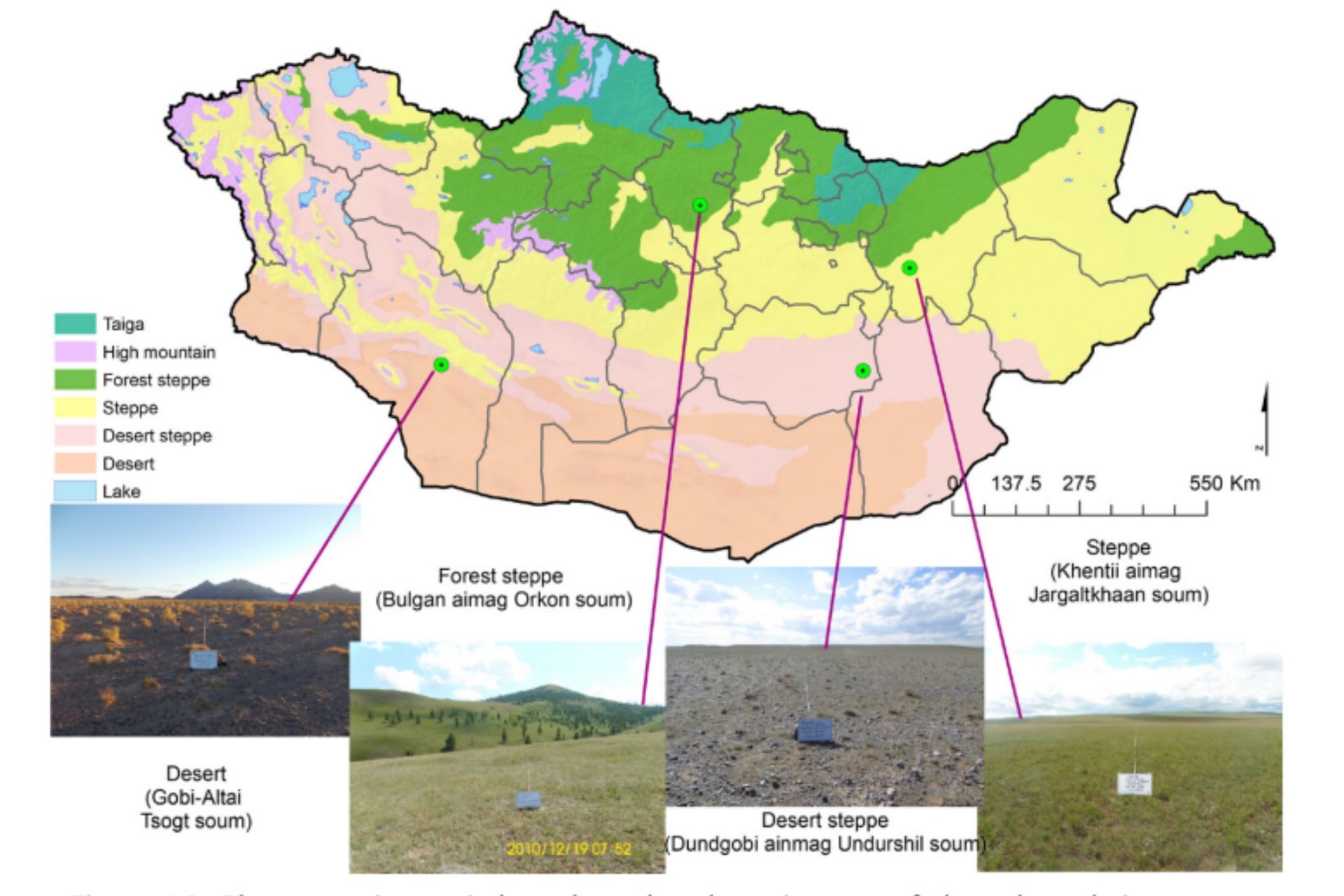Mongolia is amongst the fewer nations that preserved nomadic livestock husbandry. Nevertheless, the changes in the social, political and economic systems of the country have led to a steady increase in the number of livestock following the transfer of livestock to private ownership and the shift to a free market system. As a result, decrease in the frequency and distances of seasonal migrations of herder families and herds, have increased the pressure on rangelands and accelerated damages.
The questions, we face in an effort to introduce optimal use of grazing resources while reducing degradation of rangelands, and to manage livestock production adapted to climate change and market demands are related to how much rangeland resources will be available, how many heads of livestock can be supported, how much rangeland has been deteriorating, whether the degraded rangelands will recover, and how long it will take to rehabilitate degraded rangelands.
The Green Gold-Animal Health project of the Swiss Agency for Development and Cooperation (SDC), which has taken the first step towards sustainable rangeland management, has developed a new assessment, monitoring and management procedures that aims to understand and improve rangeland health across Mongolia, in collaboration with relevant ministries, agencies and universities. In order to implement the new methodology and procedures for rangeland monitoring sustainably and to provide information on changes of the rangeland health at the national level, the National Agency for Meteorology and Environmental Monitoring (NAMEM) is now enabled to undertake the assessment of the health of rangelands at 1516 plots that represent the bags, the primary administrative unit, using a nationally standardized methods for the primary data collection, analysis and interpretation.
The theoretical basis for the determination of the health of rangeland and the development of comprehensive spatial management recommendations tailored to rangeland use and local conditions and the new concept currently known as Ecological Site Description have been developed by researchers from universities and research institutes, specialists of the Agency of Land Management, Geodesy and Cartography (ALAMGaC) and the NAMEM (National Agency for Meteorology and Environmental Monitoring) in collaboration with the Green Gold-Animal Health Project.
It has been approved as a basic model for the Mongolian context and has been adopted at the national level. Based on the above-mentioned rangeland ecosystem monitoring results, the first and second rangeland health reports were prepared in 2015 and 2018 under 8 National report of the Grazing impact monitoring Of Mongolia the title “National Rangeland Health Report of Mongolia” and submitted to the relevant government ministries and agencies for official use and presented to the public as well.
Click here NATIONAL REPORT






